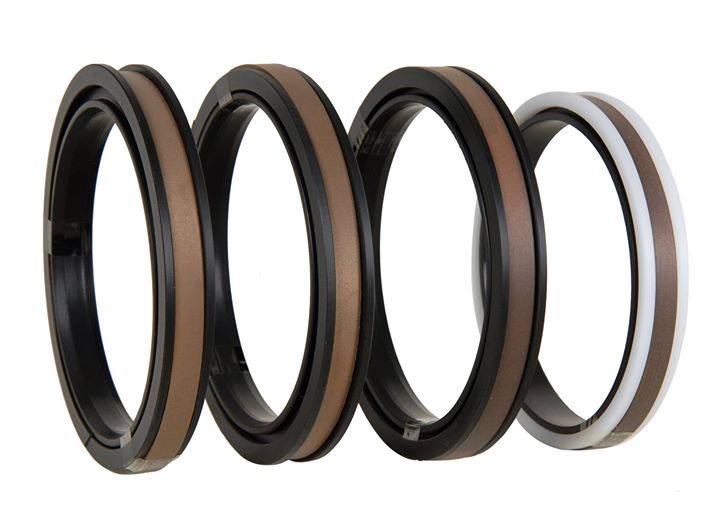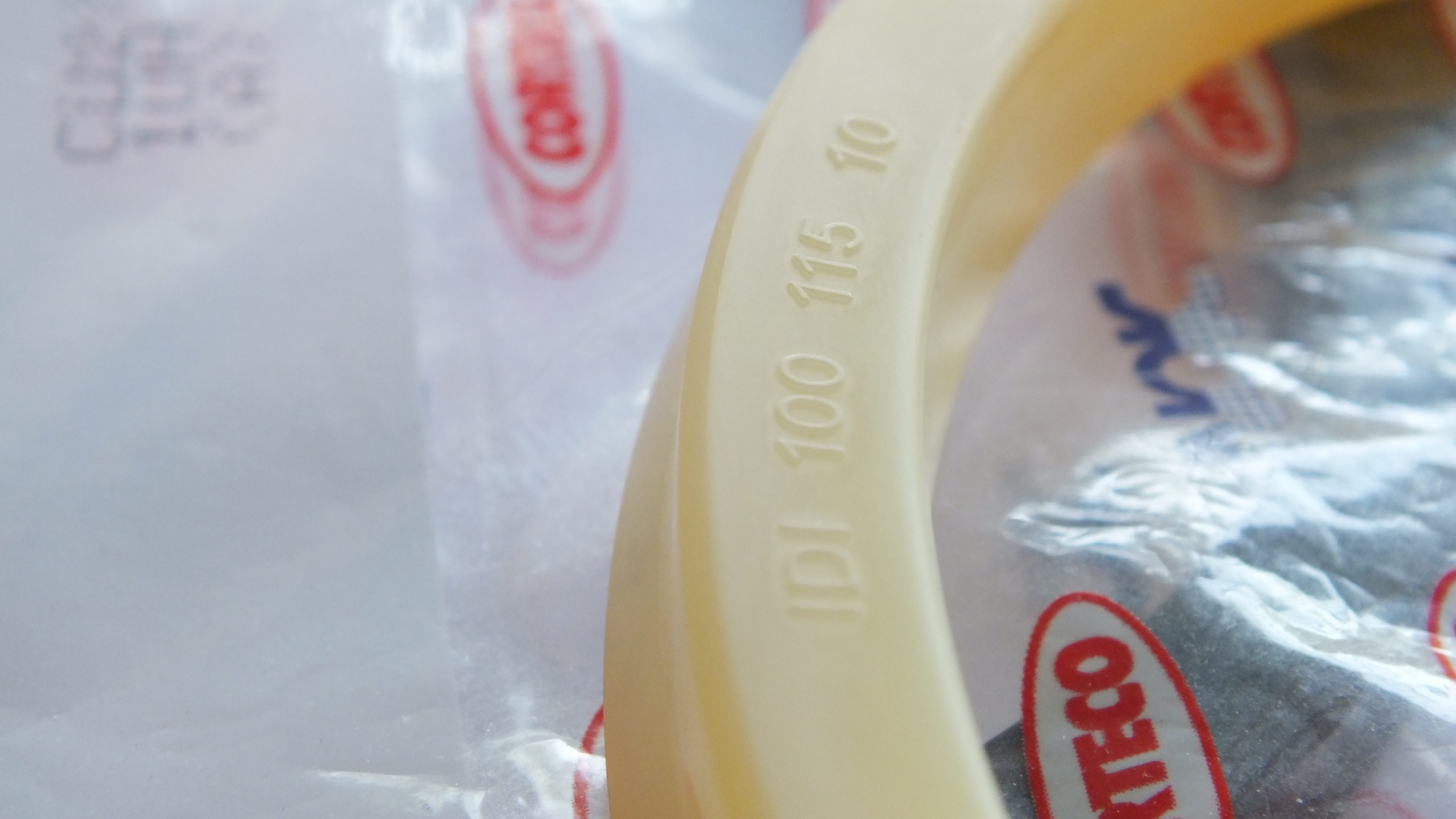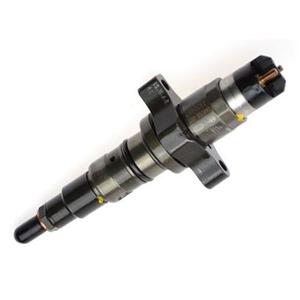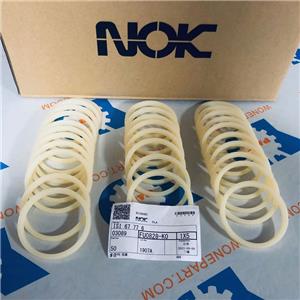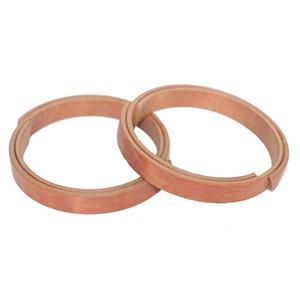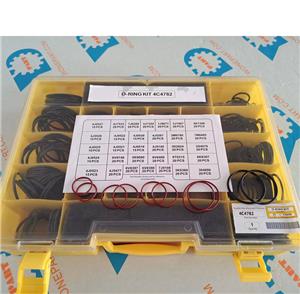CAT inch seal
The factors for seal losing efficacy
1. Design selection is not reasonable
(1) The seal is divided into two categories: static seal and dynamic seal according to whether there is relative movement between the two joint faces sealed. The dynamic seal is divided into a rotary dynamic seal and a mobile dynamic seal according to the relative movement direction. In addition, the type of working medium, pressure, temperature and the relative speed of movement between the two pairs of seals have different requirements on the material and structure of the seal. For example, static seals use O-rings, various gaskets, sealants, etc.; rotary seals are used in addition to O-rings, and oil seals are widely used; reciprocating motions generally use O-rings, especially at high speeds. Generally, it is not common used, and lip seals such as a V shape, a Y shape, a Yx shape, a J shape, and the types are generally used.
(2) The material used as the sealing material, nitrile rubber and polyurethane, can only be used in oil temperature below 100 °C; and the temperature of polypropylene, silicone rubber and tetrafluoroethylene is -50 to 225 °C; oil resistance Rubber and fabric resistant oil resistant rubber can be used at 120 ° C for a long time. The maximum pressure resistance of the rotary lip seal is 0.4-0.7MPa, and the reciprocating lip pressure is between 30-80MPa depending on the material and shape. Fluororubber is suitable for almost all lubricants, fuel oil and gasoline, and silicon. Rubber is not suitable for mineral oils with low benzene rubber dots and oils with extreme pressure additives; nitrile rubbers are also oil resistant, but not for phosphate greases and gear oils containing extreme pressure additives; rotary lip seals The linear velocity with the spindle contact surface is generally 6 to 12 m/s, and the reciprocating lip rubber or the cloth rubber is 0.5 to 1.5 m/s. In addition, the hardness of the rubber should vary with the height of the pressure and the size of the gap. The pressure is high, the hardness is slightly larger when the gap is large, and vice versa.
(3) The structure, size and tolerance design of the seal itself are unreasonable and do not meet the requirements of relevant standards.
(4) The structural dimensions and tolerances of the seal mounting groove are not properly designed or the processing requirements are not meeting the working requirement.
(5) If the surface roughness of the shaft matched with the seal is too high, the wear of the seal will be accelerated; if the seal is too low, the lubricating film between the lip and the contact surface of the shaft is difficult to form, and the roughness is generally Ra0.32 to 0.16. It is appropriate.
(6) The inner hole and the end of the bearing cap with oil seal installed, not only the dimensional accuracy should meet the requirements, but also the coaxiality tolerance can not be too large. If the oil seal and the spindle concentricity deviation is too large, the oil seal and the spindle surface will produce local Wear and cause leakage.
2. Wrong installation
(1) Checks are not carried out before installation, and seals that do not meet the requirements are installed.
(2) The sealing groove of the machining is not inspected during installation. The groove is not chamfered with burrs, roughness, dimensional accuracy, and geometrical tolerances that do not meet the requirements.
(3) The installation site, tools and sealing grooves are not cleaned before installation, and there are iron debris and other debris in the grooves.
(4) Hydraulic oil or grease is not applied to the lip of the seal at the time of installation.
(5) Improper operation during assembly, resulting in damage to the seal. When the seal is easily damaged by threads or the like, it is not used with a protective cover or wrapped with tape for installation, or when the seal passes through a keyway or the like, fails to take corresponding measures (such as filling the keyway with asbestos sheets or rubber sheets) are protected.
(6) Some seals are directional. If you care about the direction, you will not only fail to seal, but will cause leakage.
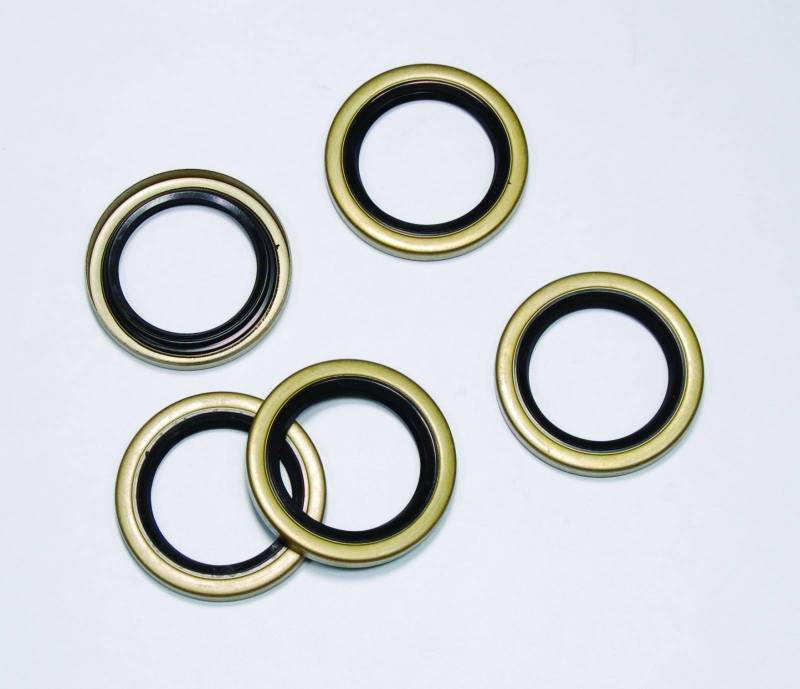
3. Improper use of custody
(1) The oil is contaminated, and the solid particulate content exceeds the standard, resulting in increased wear of the seal. Due to the presence of water in the hydraulic oil, the wear and corrosion of the components are accelerated, and the oil is deteriorated to cause poor sealing.
(2) Continued use of aged oil can corrode the seal, and the hard oxide particles in it will wear the corroded seal.
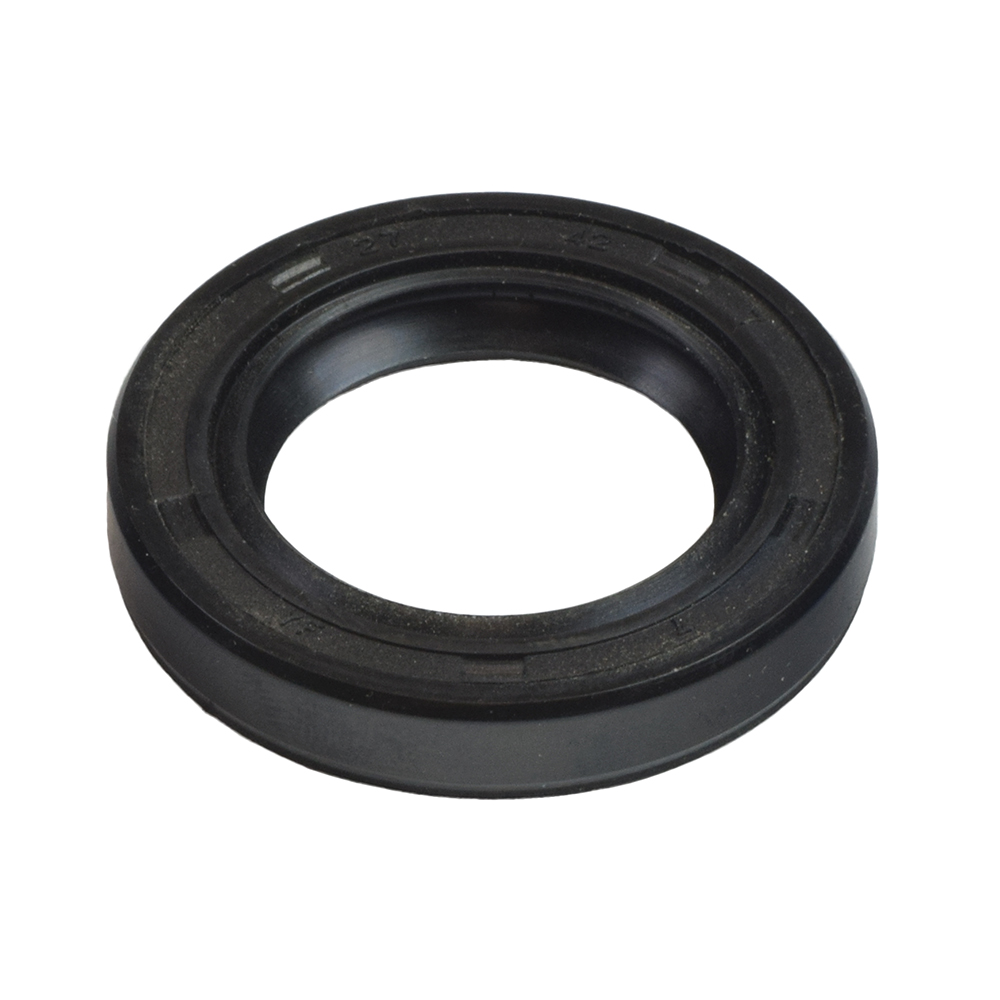
(3) If the compatibility between the oil used and the sealant is poor, it will accelerate the deterioration of the rubber, and the hydraulic oil must be selected according to the requirements of the machine manual.
(4) Seals that have been used for many years, some have been permanently deformed or aged, but continue to be used.
(5) Improper storage. When storing rubber seals, the temperature in the warehouse should be kept between -15-35 °C, the relative humidity should be kept between 50% and 80%, and should be protected from direct sunlight, rain and snow, and with acid and alkali, oil. Contacting with substances that affect the quality of rubber, such as organic solvents, and should be above one meter of the heat source. If these requirements are not met, or if the storage time is too long, causing rubber aging, or permanent deformation due to stacking or hanging, the seal may be invalidated.
